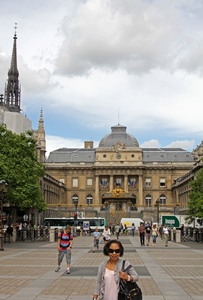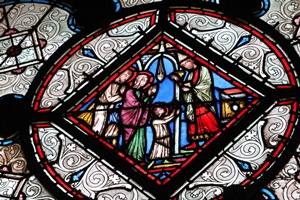Louis IX’s main motivation for building the chapel was as a place to store his collection of holy relics, mostly expensively procured from the financially-strapped Holy Roman Empire. This collection included the Crown of Thorns mentioned on the Notre-Dame page, which is now housed in the cathedral. Louis also had a massive silver chest created (more expensively than the church itself) to hold his relics. This all worked out pretty well for awhile, again until the French Revolution. At this time the spire atop the church was torn down, the choir stalls and rood screen were dismantled, most of the relics were scattered (though the Crown of Thorns found its way to Notre-Dame), and anything made from precious metals, including the chest, was melted down. The church itself was used for awhile to store government archives. This undertaking required better lighting than could be easily had in the dim church, and prompted the removal and loss of some of the stained glass. In the 19th Century a restoration was undertaken, supervised by the same Eugène Viollet-le-Duc who later did the same for the Notre-Dame Cathedral. A new spire was installed on the roof, the stained glass that could be found was reinstalled, and the missing stained glass was recreated, matched as closely as possibly to existing drawings of the original panes. About two-thirds of the glass remains original.
To get to the church, one must first pass through a metal detector, where they are very strict about a no-sharp-objects rule. We found a long line of people waiting to get to the metal detector, and a shorter line for people with Museum Passes. This is where our Museum Passes began to justify their cost. Not only do they include entry to most of the area attractions, but they also enable their holders to use shorter entry lines and to bypass some ticket lines altogether. Thus they can be used to save both time and money. After getting through the metal detector, we entered the grounds of the Palace of Justice and followed signs to the church. Outside the church was a ticket booth (unlike Notre-Dame, the Sainte-Chapelle church is not free), but we were able to flash our Museum Passes and walk right into the lower chapel.
Sainte-Chapelle is actually two chapels in one. The lower chapel was originally established as a chapel for all the residents of the palace, and was not as elaborately decorated as the upper chapel, intended for royalty. Even today, the lower chapel doesn’t seem to get much respect. Though much more compact than many chapels of the time, it is still impressively laid out, with some interesting features and decorations. But it is not well maintained, with torn wallpaper in places and an overall feeling of dinginess.
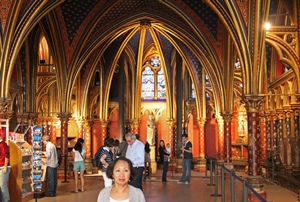
Nella in Lower Chapel Med Lrg Xlg |
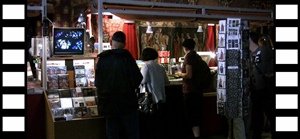
Lower Chapel with Souvenir Stand MP4-Sml MP4-Med WMV-HD |
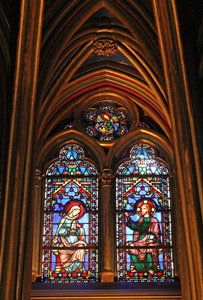
Stained Glass in Choir Med Lrg Xlg |
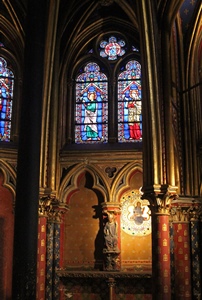
Stained Glass and Small Statue Med Lrg Xlg |
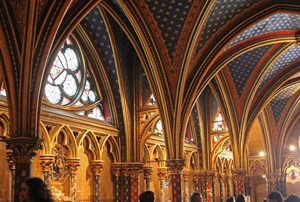
Vault and Columns Med Lrg Xlg |
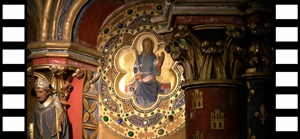
Wall Decoration, Choir and Souvenir Stand MP4-Sml MP4-Med WMV-HD |
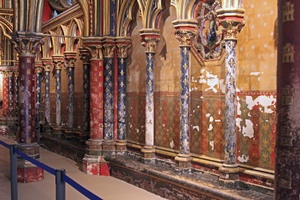
Columns Along Wall Med Lrg Xlg |
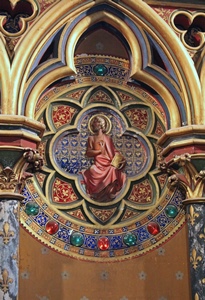
Apostle Decoration Med Lrg Xlg |
A fairly large part of the chapel is occupied by a souvenir stand – convenient but distracting. Restoration money appears not to have reached the lower chapel in awhile.
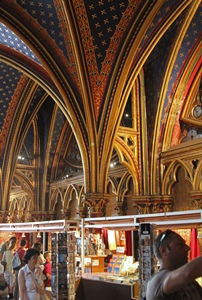
Column and Souvenir Stand Med Lrg Xlg |
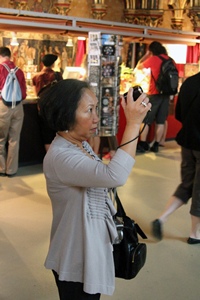
Nella and Souvenir Stand Med Lrg Xlg |
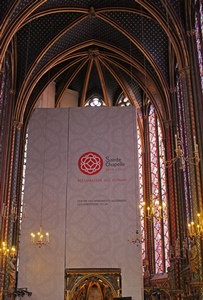
Choir Area Restoration Work Med Lrg Xlg |
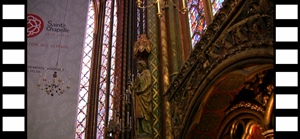
Choir Area and Reliquary MP4-Sml MP4-Med WMV-HD |
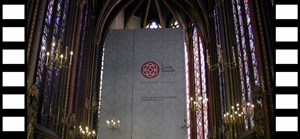
Overview of Chapel MP4-Sml MP4-Med WMV-HD |
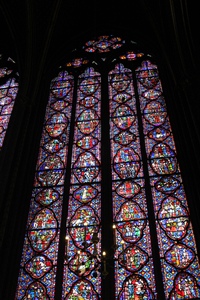
Stained Glass - History of the Holy Relics Med Lrg Xlg |
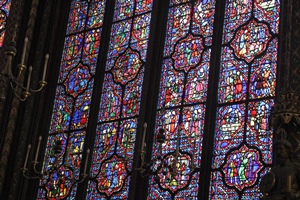
Book of Kings (detail) Med Lrg Xlg |
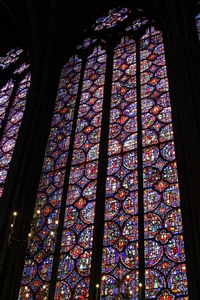
Stained Glass - Esther Med Lrg Xlg |
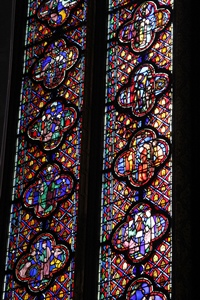
Ezechiel's Visions (detail) Med Lrg Xlg |
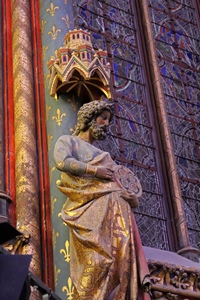
Apostle Statue Med Lrg Xlg |
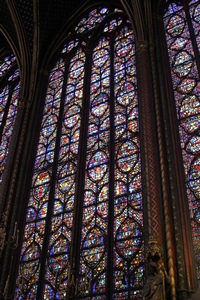
Stained Glass - Book of Numbers Med Lrg Xlg |
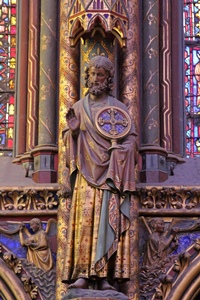
Apostle Figure Med Lrg Xlg |
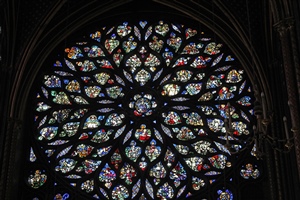
Rose Window - The Apocalypse Med Lrg Xlg |
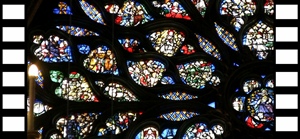
Rose Window MP4-Sml MP4-Med WMV-HD |
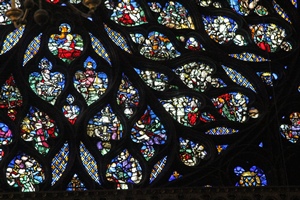
Rose Window (detail) Med Lrg Xlg |
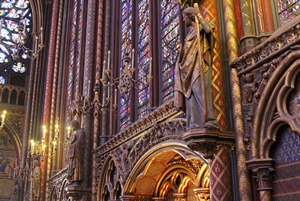
Apostle Statues Med Lrg Xlg |
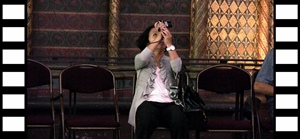
Deuteronomy and Joshua and Nella MP4-Sml MP4-Med WMV-HD |
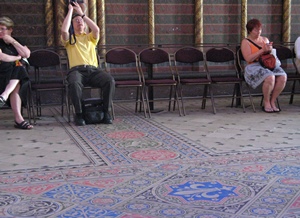
Floor, Bob Taking Pictures Med Lrg |
